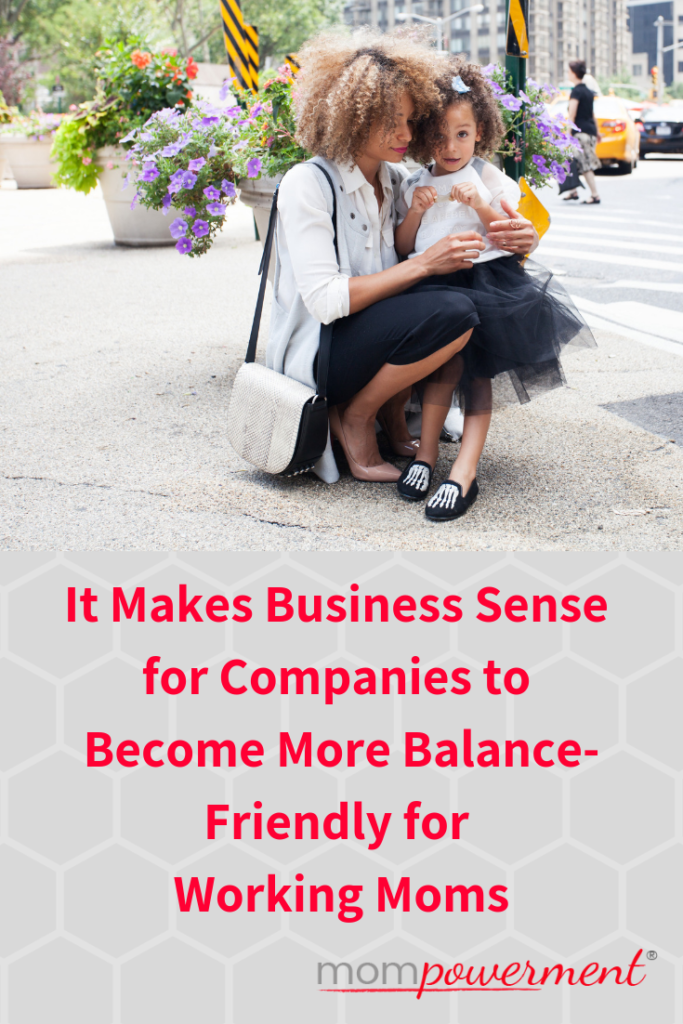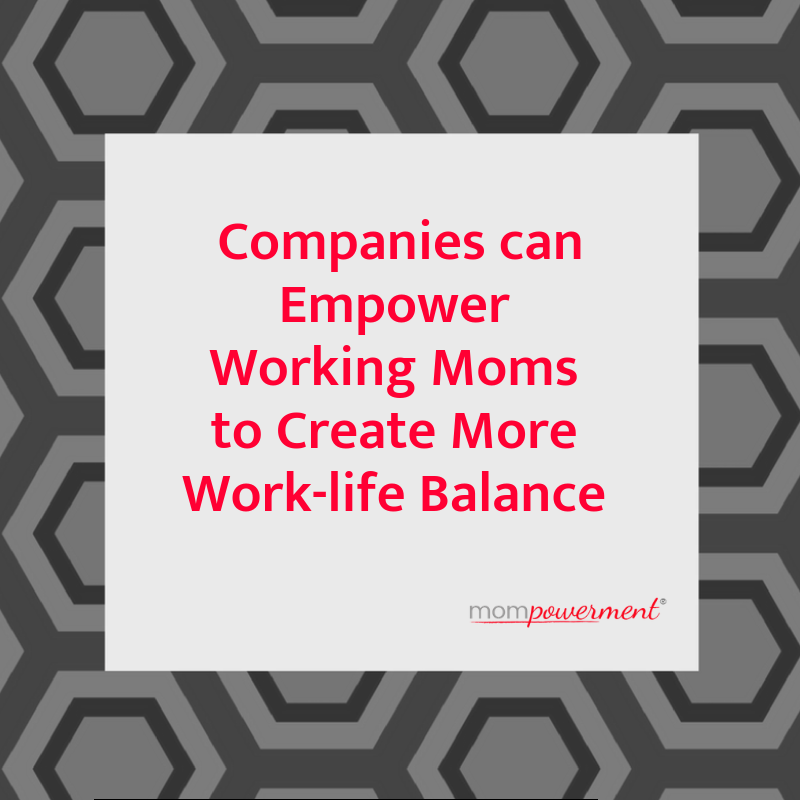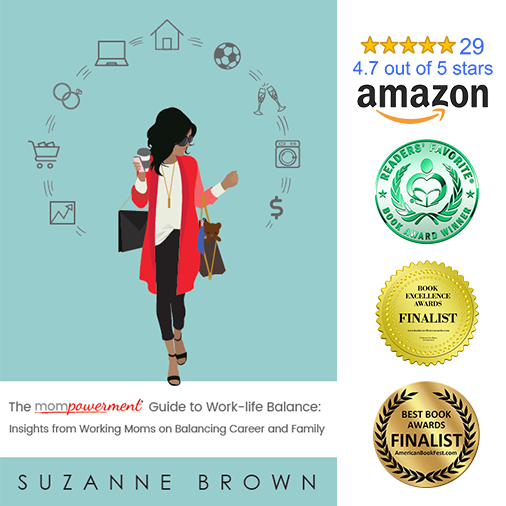
This whole month is dedicated to the employer side of things. As I work with companies to become more balance-friendly, I get questions about how to give employees, especially working mothers, what it is that they need and want. So this month I’ll share research and insights and help give companies ideas to start empowering employees to create the balance they crave. This first post is about why empowering employees to have more work-life balance makes business sense.
Cost of replacing working mothers who leave your company
Let’s start with the money side of work-life balance. Have you considered the cost implications of letting working mothers leave your company because you’re not creating a more balance-friendly environment or providing resources to help in their care-giving duties? Consider that it takes 50-200 percent of someone’s salary to find a replace, hire him or her, train that individual, and get your new employee up to speed.1 It could take months to find the right candidate in this tight labor market. That working mother walking away hits your bottom line because you miss those sales, lose productivity, and you have to pay to replace her.
As educated women are waiting longer to become mothers (more on that shortly), it can be even more costly to you if they choose to leave your company. They have often moved up the corporate ladder and are managers and in leadership positions. They have tremendous expertise and years of experience. If it’s a manager that leaves, you’ll pay closer to the 200 percent side of her salary to replace her.
And then there is the issue of your working mom employee not leaving the labor force; she could go to your competitor that is willing to be more balance-friendly. Imagine losing your productive, knowledgeable employee and having someone else gain that expertise. What happens if her clients follow her? You get it; it’s an even bigger financial hit.
Companies with women in key leadership positions perform better
Let’s continue on the topic of financials. A worldwide study from the Peterson Institute for International Economics showed that having women in leadership roles can impact the bottom line. They found that “going from no women in corporate leadership to a 30% female share is associated with a one-percentage point increase in net margin – which translates to a 15% increase in profitability for the average firm.2”
Grooming women for those leadership positions over time and understanding their long-term needs can ensure you get the benefit instead of your competitor. It builds loyalty in the short and long-term. It can also be the backbone of mentorship programs for those women leaders and for those that follow in their footsteps.
Diverse teams
Another aspect that has some financial implications is diversity in the workplace. As you build a company and a company culture, you might be tempted to try to be consistent in the types of employees you hire. Maybe they have a similar background, education, or process for thinking. Keep in mind that numerous studies and analyses show that diverse teams lead to better results for companies.3
Populations trends that impact working mothers and businesses
There are a few bigger trends for you to consider from a population perspective that I found as I did research for my first book and for my TED talk. These show another side about why work-life balance makes business sense.
Moms are getting sandwiched between caring for their families and their aging parents. With more than 10,000 Baby Boomers turning retirement age each day in the US, this is affecting more and more working mothers.4 Companies must consider the impact, stress, and overall needs of caregivers as they create solutions.
What happens if employers don’t consider how moms are getting sandwiched? Moms can’t stop being a mom or a daughter, but they can stop being employees. As a recent Harvard article reminds us, they could stop being your employees and go to a competitor.5 Or, they could leave the company and start their own companies where they can create a balance-friendly environments.
Also keep in mind that educated women are waiting longer to have children. About 40 percent of women with an undergraduate degree and 54 percent of women with a master’s degree have babies at age 30 or older, which is four years older than the national average of 26.6
After having their first child will they come back to your company? If you make that transition to working motherhood hard, will they leave and go to a competitor or start their own business?
Chances are that these educated women are managers or employees who lead key initiatives. It’s not only the cost implications of needing to find, replace, and ramp up new employees. There is also the lost institutional memory.
Work-life balance programs as recruiting and retention opportunities
Consider those top candidates that you’re trying to attract as employees might go to competitors that are willing to put create more balance for employees. And then there are employees who can leave because competitors are more in line with what working mothers want when it comes to how they want to work. Essentially programs that allow more balance and flexibility help attract and retain top talent. And becomes increasingly more important with Millennials.7

Smaller companies can provide work-life balance
If you’re a small business, you might think that you simply can’t compete with larger companies as it relates to work-life balance. You can! Remember, balance can take many forms from maternity leave (even better paid maternity leave) to working from home to paying for milk to be shipped home while nursing mothers travel for work to paying for food delivery and other household errands. See what makes sense for you financially as a small business owner, but think about the overall financials, not simply the cost of a program. For example, compare that 50-200 percent rate of finding new employees versus the cost of a program per employee.
Thinking outside of the box will help you uncover solutions you hadn’t originally thought of. Talk to HR and outside experts to help you think creatively about potential work-life balance initiatives.
It’s the right thing to do
I’ve given you many reasons to focus on balance initiatives. It makes business sense to implement these programs, but, even more so, it’s the right thing to do. We must value caregiving as much as we value working mothers’ professional contributions. Women are half the population and we want and need them to be productive and contribute financially while being caregivers.
Consider supporting working dads
While I usually write through the lens of working moms and how to support them, it’s helpful to also support working dads so that moms aren’t the only caregivers. Give similar resources and time off (e.g., maternity and paternity leave) to both women and men so that you can help both moms and dads be caregivers of their children and their aging parents. Don’t assume that only working moms want to be engaged with their families.
If you’d like Mompowerment to be part of the resources you provide to working moms, whether through buying books in bulk (special pricing for purchases of 20+ books) or in-person or online workshops, email me directly. We can get those resources in place quickly and give working moms practical tips to start making changes.
- http://www.huffingtonpost.com/julie-kantor/high-turnover-costs-waymore-than-you-think_b_9197238.html
- https://hbr.org/2016/02/study-firms-with-morewomen-in-the-c-suite-are-more-profitable
- https://hbr.org/2016/11/why-diverse-teams-are-smarter
- http://www.pewsocialtrends.org/2010/12/20/baby-boomers-approach-65-glumly
- https://hbswk.hbs.edu/item/why-business-should-support-employees-who-are-caregivers
- http://www.pewresearch.org/fact-tank/2015/01/15/for-most-highly-educated-women-motherhood-doesnt-start-until-the-30s
- https://www.inc.com/ryan-jenkins/this-is-what-millennials-value-most-in-a-job-why.html


